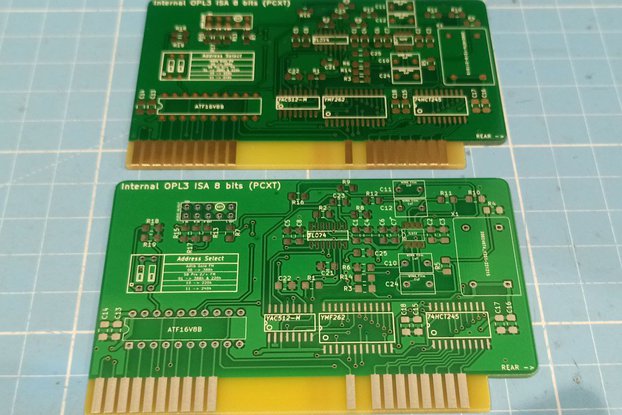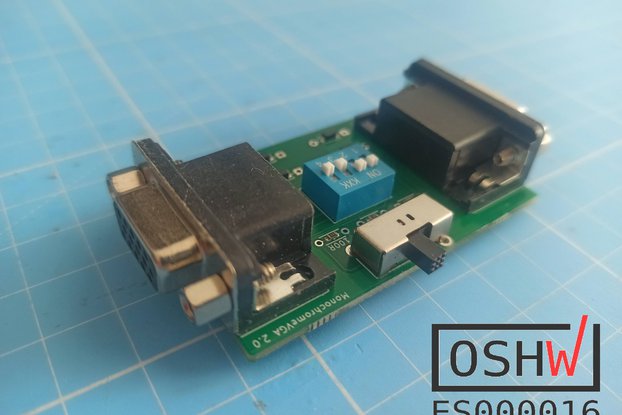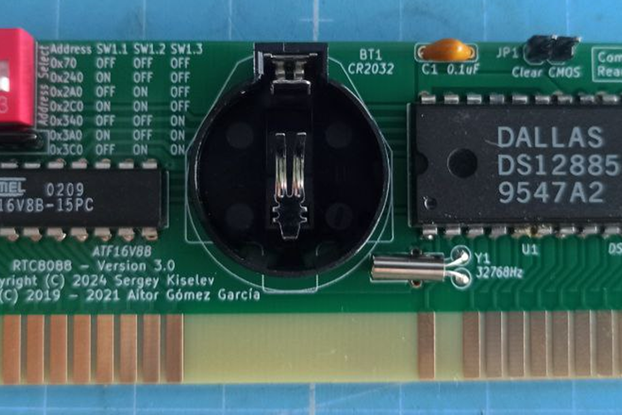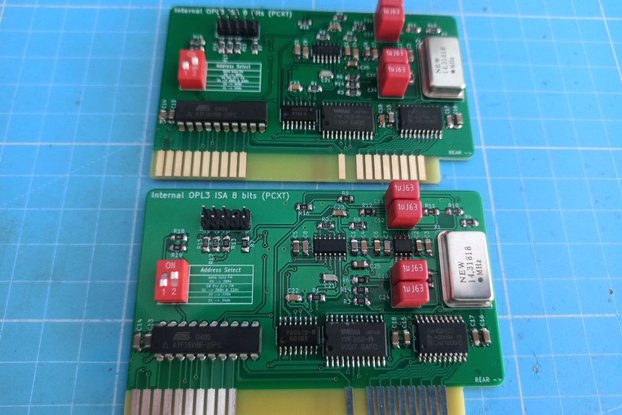Replace an old or dead hard drive in a vintage PC with a hassle-free, reliable SSD mSATA
Designed by aitorgomez.net in Spain
This product is no longer available for sale.
The seller may be offering an improved version or it may be hanging out on the beach, enjoying the retired life.
What is it? This bootable expansion card provides an mSATA SSD interface to 8-bit ISA systems such as PC/XT, or an IDE interface. An mSATA SSD interface will always be quiet, and more reliable than a…
Read More…This bootable expansion card provides an mSATA SSD interface to 8-bit ISA systems such as PC/XT, or an IDE interface. An mSATA SSD interface will always be quiet, and more reliable than an old mechanical hard drive.
The mSATA SSD can be easily found in online shops like Aliexpress, at low prices and with different capacities. It is not supplied with the product.
Due to the complexity of the routing being low profile and the positions of the components, also close together, the design of both is 4-layer, with the two inner layers being GND and VCC.
The finish is ENIG + Gold Fingers, which is more reliable and allows multiple insertions of the ISA card, without affecting its reliability and performance.
In addition to the mSATA SSD interface, it is also possible to connect a compatible device to the 44-pin, 2.0mm IDE connector. However, it's important to note that it's not possible for both to operate at the same time, one as slave and the other as master. You can only have one of the two in master mode; at least I haven't been able to make them work together.
This means that the mSATA SSD unit must be pre-formatted and have the operating system up and running, just like the IDE device, or the operating system must be installed from one loaded with a floppy drive.
To make it easier to prepare the mSATA SSD disk and load applications from your PC or Mac, I recommend also getting an mSATA to IDE interface from Aliexpress, and then from IDE to USB.
There is an Open Source version developed by Monotech-PCs. Which, in turn, is based on the XT-IDE Rev2 and Glitchworks schematic.
For me, it is an evolution of my previous XTSD project, which I have withdrawn from the market.
The version which I publish further reduces the size of the board developed by Monotech-PCs and combines most of the logic in an SPLD ATF16V8B, from which addressing of the IC 28C64B, as well I/O port of the XTSD interface, are established.
By default, the ROM addressing will be set to D000h, and the XTSD interface to I/O port 300h. If other configuration is required, please let me know at the time of ordering.
Access to the ROM can be enabled and disabled using a jumper. In the same way, write access to it can be enabled and disabled with another jumper, but it is recommended to keep it empty once it is configured.
By default the XT-IDE BIOS comes configured for:
Any of the above can be changed on purchase, or in your own time with the simple DOS utility and built-in jumpers. I recommend using the 186-compatible BIOS instead if you have an 80186 or NEC V20/V30, or higher, as the performance is better.

$3.95
Free Shipping!

$8.95
Free Shipping!

$11.95
Free Shipping!

$12.95
Free Shipping!

$35.95
Free Shipping!

$11.95
Free Shipping!
$58.00
Free Shipping!

$199.00
Free Shipping!

$80.00
Free Shipping!
By clicking Register, you confirm that you accept our Terms & Conditions
We recognize our top users by making them a Tindarian. Tindarians have access to secret & unreleased features.
We look for the most active & best members of the Tindie community, and invite them to join. There isn't a selection process or form to fill out. The only way to become a Tindarian is by being a nice & active member of the Tindie community!
